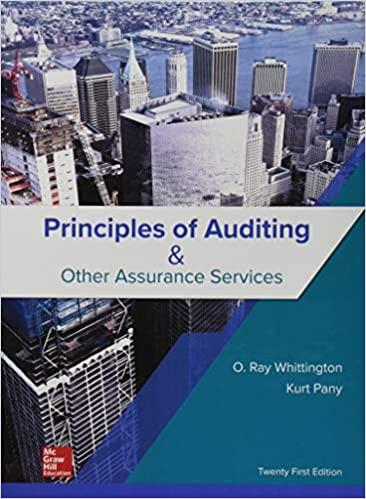Question
A company has invested over $300 million in recent years and plans further capital expenditure to increase financial returns. The two substantial cash outflows associated
A company has invested over $300 million in recent years and plans further capital expenditure to increase financial returns. The two substantial cash outflows associated with the expansion are the cost of the building and equipment. The company owns a block of land adjacent to the existing factory on which they plan to construct the new building. In 2001 when the company constructed the original $7 million facilities they leased the land to a dairy farmer for $140,000 each year. At that time the company also purchased A equipment at a cost of $300,000. At the time this equipment was determined to have a twenty-year life for taxation purposes and an assumed zero salvage value for depreciation calculations. Before the expansion can proceed the company must terminate the lease agreement and sell the equipment. The equipment has a scrap value today of $80,000. This years financial statements show the equipment is being depreciated at $15,000 per year and the balance sheet indicates a carrying value of $45,000. Because the $300,000 cash flow relating to the equipment has already occurred the accountants suggests it be treated as a sunk cost in the analysis.
The capital cost of the building is budgeted to be $4.8 million today. The company proposes to use $2 million of the $3,573,000 cash on its balance sheet to pay for the building to reduce the casting cost to just $2.8 million. For taxation purposes, the new building has a twenty-year life. However, the company will perform the financial analysis of the expansion over a ten-year time period. This expansion will also require $2 million worth of B equipment today. The taxation office confirms that the B equipment has an eight-year tax life. In companys experience, if B equipment is maintained properly it be operated effectively for ten years before requiring replacement. Companys management accountants depreciate all assets over ten years to match the lifespan of the factory expansion.
Throughout 2017 the company incurred $260,000 of expenses on external architectural plans relating to an enlarged facility. To ensure this expense has not wasted the directors plans to include it in the analysis as a cash outflow in 2018. This approach will ensure the historical business expenses can be recovered and allow it to generate the required return.
There is an anticipated expense of $180,000 to install the equipment associated with the expansions, and a $50,000 cost to upgrade the electricity supply required to commence operations. According to the taxation office, both of these items are classified as a business expense. The manager of the facility would prefer to classify these expenses as assets and therefore depreciate them over the ten-year project life to give the appearance of higher profitability for the 2018 financial year. The manager is budgeting to achieve a net profit for 2018 of $1.22 million and increasing it by $150,000 for 2019.
You assume that the building can be sold for $1.9 million in the year 2028, and at any point in time, the equipment will have a resale value of $650,000. In ten years time the company assumes the it will have cash holding of $12 million. You note the tax office regulation that all non-current assets be depreciated to zero.
Substantial amounts of capital have been invested at the facility site in recent years, including $1.75 million on packaging machinery. The facility has existing repairs and maintenance expense is budgeted at $400,000 for each of the next five years, increasing to $500,000 for the following five years. If they dose expand operations then a $1,500,000 expense will be incurred in five years time for repairs and maintenance of the equipment and building.
The company has an annual sales of $2.5 million. The expansion will bring ongoing higher sales of $250,000 p.a. The company currently has $3.5 million of inventory and $570,000 of this amount is situated at the existing facility. Account receivables at the moment are $2.3 million. If the board of directors approves the new facility expansion you anticipate that accounts receivables will be $2.3 million and an additional $1.1 million of inventory will be necessary. Account payable will increase by $600,000 to $4.4 million.
The companys required return is 9%. Assume the company tax rate will remain at 30%.
Question: Present an itemized breakdown (and the total) for the cash flows at the start, over life, and at the end.
Step by Step Solution
There are 3 Steps involved in it
Step: 1

Get Instant Access to Expert-Tailored Solutions
See step-by-step solutions with expert insights and AI powered tools for academic success
Step: 2

Step: 3

Ace Your Homework with AI
Get the answers you need in no time with our AI-driven, step-by-step assistance
Get Started


